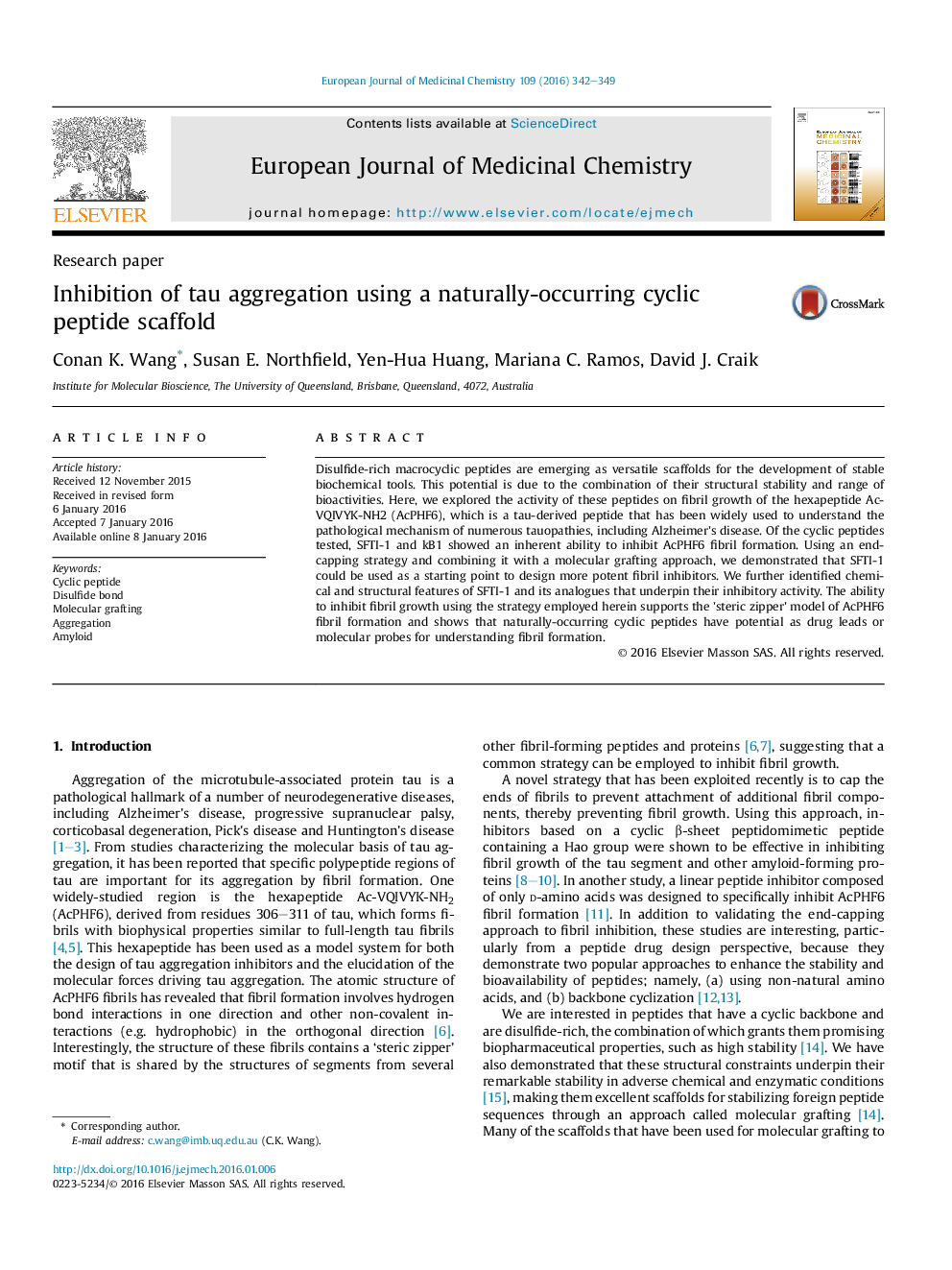| کد مقاله | کد نشریه | سال انتشار | مقاله انگلیسی | نسخه تمام متن |
|---|---|---|---|---|
| 1395247 | 1501107 | 2016 | 8 صفحه PDF | دانلود رایگان |
• We use disulfide-rich cyclic peptides as scaffolds to design fibril inhibitors.
• The naturally-occurring peptides, SFTI-1 and kB1, can disrupt fibril growth.
• SFTI-1 can be re-engineered to improve its inhibitory activity on fibril formation.
• We identify design guidelines for using SFTI-1 as a fibril inhibitor scaffold.
Disulfide-rich macrocyclic peptides are emerging as versatile scaffolds for the development of stable biochemical tools. This potential is due to the combination of their structural stability and range of bioactivities. Here, we explored the activity of these peptides on fibril growth of the hexapeptide Ac-VQIVYK-NH2 (AcPHF6), which is a tau-derived peptide that has been widely used to understand the pathological mechanism of numerous tauopathies, including Alzheimer's disease. Of the cyclic peptides tested, SFTI-1 and kB1 showed an inherent ability to inhibit AcPHF6 fibril formation. Using an end-capping strategy and combining it with a molecular grafting approach, we demonstrated that SFTI-1 could be used as a starting point to design more potent fibril inhibitors. We further identified chemical and structural features of SFTI-1 and its analogues that underpin their inhibitory activity. The ability to inhibit fibril growth using the strategy employed herein supports the 'steric zipper' model of AcPHF6 fibril formation and shows that naturally-occurring cyclic peptides have potential as drug leads or molecular probes for understanding fibril formation.
Figure optionsDownload as PowerPoint slide
Journal: European Journal of Medicinal Chemistry - Volume 109, 15 February 2016, Pages 342–349
